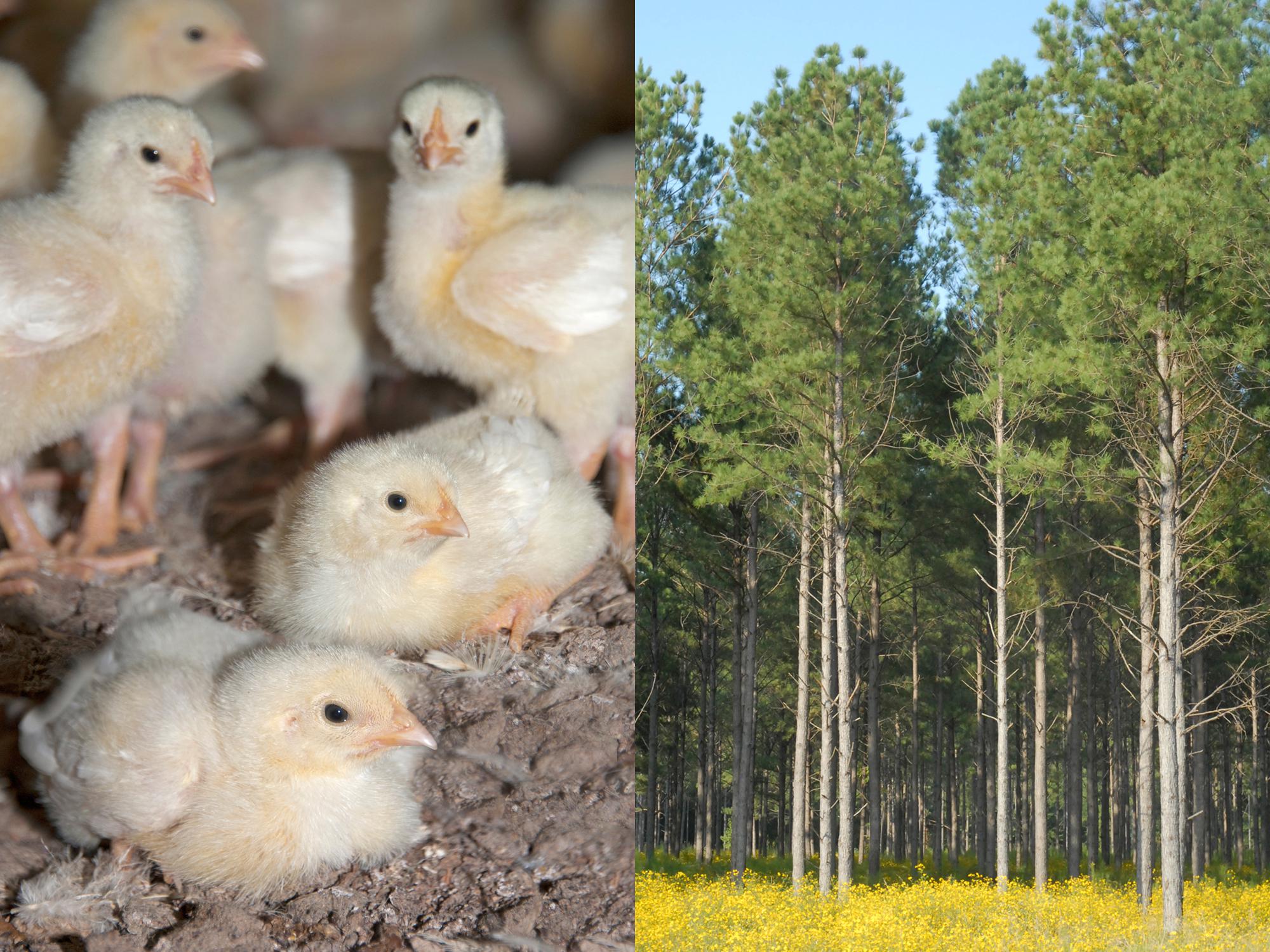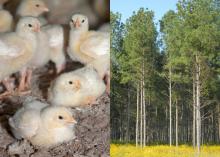Information Possibly Outdated
The information presented on this page was originally released on December 15, 2016. It may not be outdated, but please search our site for more current information. If you plan to quote or reference this information in a publication, please check with the Extension specialist or author before proceeding.
Poultry, forestry lead Mississippi agriculture
STARKVILLE, Miss. -- Poultry remains Mississippi's top agricultural commodity with an estimated value of $2.9 billion, and it shows no signs of slowing down in 2017.
Forestry comes in a distant second with total farm-gate value of $1.4 billion, according to 2016 estimates.
Mississippi State University Extension Service economists just released their estimates for the state's agricultural commodity values in 2016. The top commodities remain poultry and forestry. Soybeans remain in the third spot, dropping 1.7 percent to just over $1 billion.
MSU Extension agricultural economist Brian Williams said the Extension Service is forecasting an 8 percent increase in poultry values, thanks to an increase in broiler production. Extension economists forecast a decrease of 15 percent in forestry, primarily because of a decline in pine sawtimber prices.
“Broiler production was up 1.8 percent, and prices were 60 cents per pound in 2016, up from 54 cents per pound over the previous year,” Williams said. “Eggs had a decrease of 58 percent in value as the industry recovered from the avian influenza losses in 2015. Mississippi prospered during that outbreak, but prices went from $1.96 a dozen in November 2015 to 48 cents a dozen last June. Mississippi decreased egg production in 2016 by about 1.5 percent.”
MSU Extension poultry specialist Tom Tabler said the poultry market seems to run in cycles with seven strong years followed by seven weak years.
“If that is the case, we are in the fifth strong year, so 2017 should still be good, then trend down after 2018,” he said. “For now, people are still interested in remodeling or building new houses for broilers. Builders have enough work to keep them busy for at least one and maybe a couple of years.”
Tabler said if this past year’s drought had hit the Corn Belt, conditions would not be as positive because higher prices for feed grains (corn and soybeans) would cut into profit margins. Feed costs are roughly 70 percent of the total cost of bringing poultry to market.
“Weather is always a wild card,” he said.
In addition to poultry, other meat producers are continuing to expand.
“It is a little unusual for chicken, beef and pork to all expand at the same time, but that is what we are expecting over the next couple of years. There will be some tough competition for the market share for each product,” he said. “The U.S. probably can’t eat all that meat, so we will need to find additional export markets to support this increase in overall meat production, or else we will have an oversupply of meat down the road.”
Tabler said if there are no major disease outbreaks and farmers enjoy good weather during planting, growing and harvest seasons, 2017 should be another good year for the poultry industry.
Mississippi’s forestry industry also has prospects for continued growth in 2017.
Extension forestry specialist James Henderson said the 2016 harvest value is 63 percent higher than the 2009 harvest value of $864.9 million, which was the lowest valued harvest year since the recession of 2007-2009.
“The decrease can be attributed mostly to a year over year decline in pine sawtimber prices, which reflect lackluster growth in the lumber market and high inventory volumes and availability of timber at sawmills,” Henderson said. “The drought conditions over much of Mississippi during the second half of 2016 meant that logging operability was not limited, making ample amounts of timberland available for harvest with little to no interruption because of wet conditions.”
Henderson said hardwood sawtimber markets should continue to do well, and pine sawtimber prices may improve in 2017, as new home construction continues to grow and increases demand for pine sawtimber.













